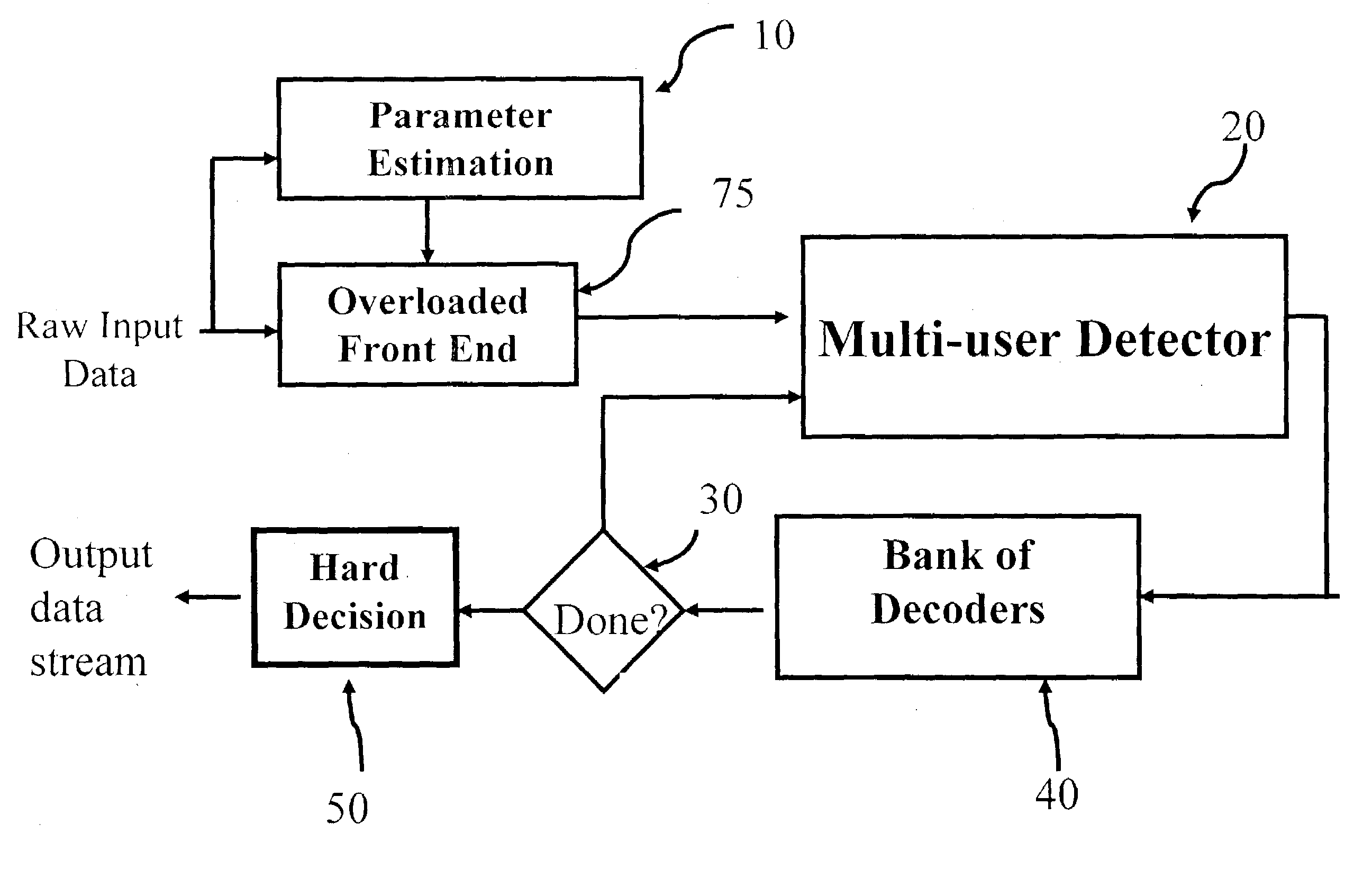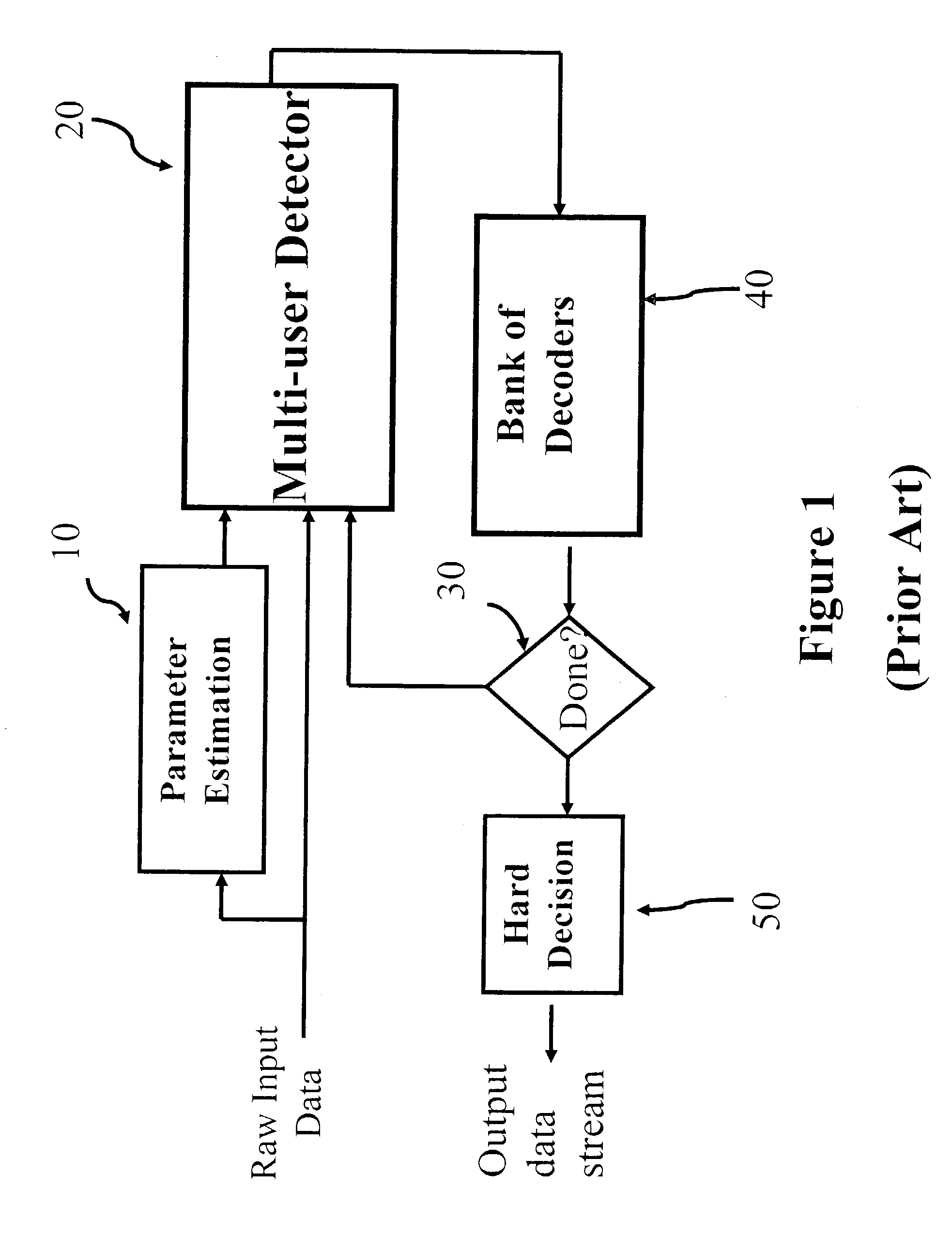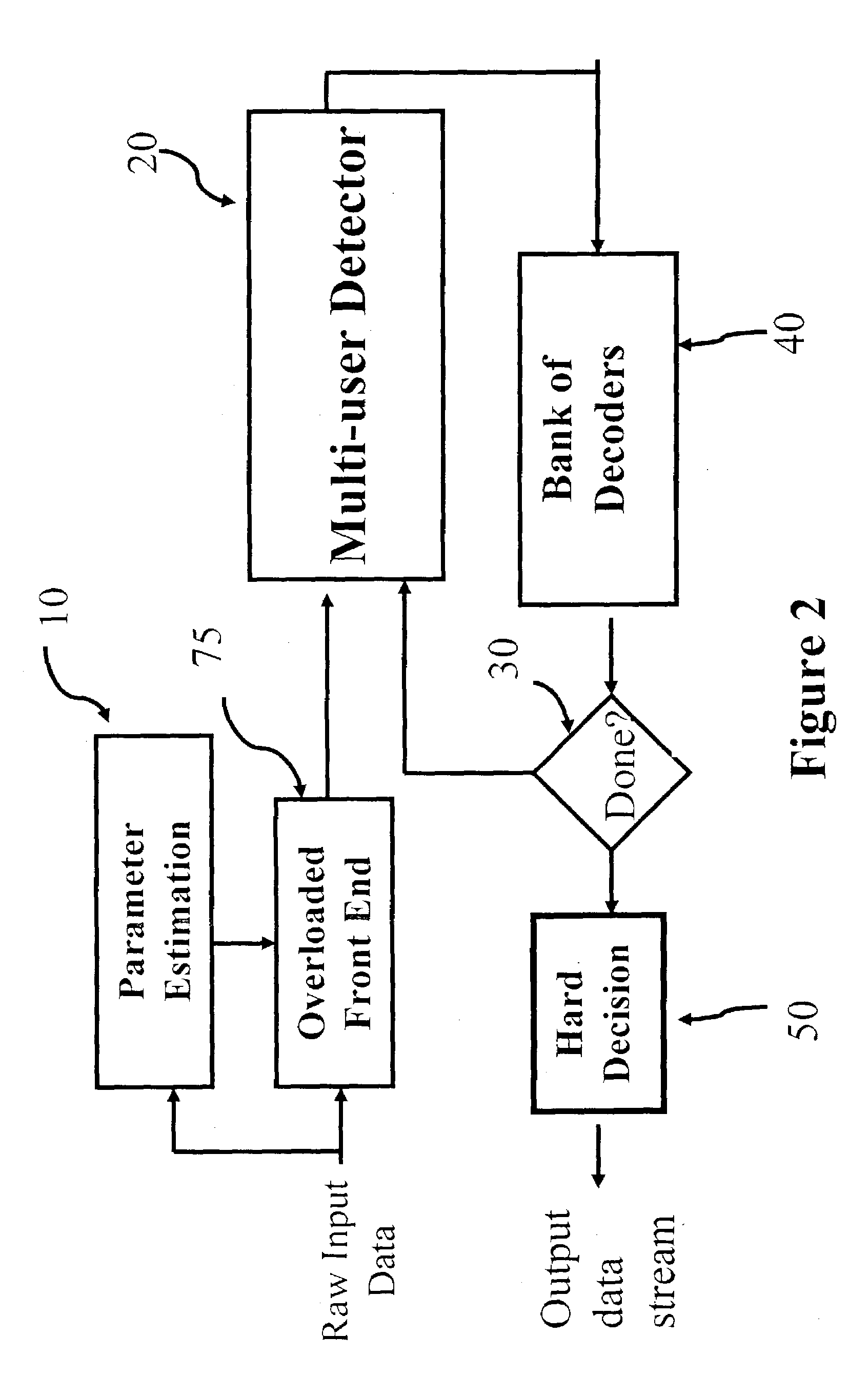Thus, despite the advancements in
wireless transmission and reception, there is a growing problem of extracting more information signals within a limited bandwidth.
In addition to the problems associated with multiple users in a given bandwidth, an additional problem is the inability to process the data in the receivers in real time.
The ability to extract the correct data from a given user is a difficult task, especially when the effects of interference and multipaths are considered.
The problem is further complicated when the number of users exceeds the number of dimensions, resulting in an overloaded condition.
Interference from adjacent channels is limited by the use of band pass filters however for each channel being assigned a different frequency
system capacity is limited by the available frequencies and by limitations imposed by
channel reuse.
The
system capacity is limited by the available time slots as well as by limitations imposed by
channel reuse, as each channel is assigned a different time slot.
The prior systems do not properly account for the real world mobile communication signals that suffer from
signal degradation such as interference and multipath problems.
However, this assumption is not accurate for co-channel interference and multipaths.
Co-channel interference refers to signals received from other users either directly or reflected.
Conventional RAKE receivers provide satisfactory performance under ideal conditions, however the signature sequence must be uncorrelated with time shifted versions of itself as well as various shifted versions of the signature sequences of the other CDMA signals.
In actuality, performance is degraded by other
signal interference and ISI.
The maximum likelihood joint demodulator is capable, in theory, of accommodating the largest number of interfering signals, but has a prohibitive computational complexity that makes it unrealizable in practice.
The decorrelator as well as virtually every other lower complexity joint demodulator, is not capable of operation when the number of signals is over a set threshold which falls significantly short of the theoretical maximum.
These transmissions have the real-time problems of multi-path and co-channel interference,
fading, and dispersion that affect the received signals.
While providing certain advantages, the performance has not been demonstrably improved.
However, one of the primary disadvantages of the prior references implementations is the inability to accommodate overloaded conditions.
Decision feedback techniques are limited in that they are incapable of working in supersaturated environments.
Only the MMSE-based decision feedback
detector can work in a supersaturated environment, however it is too aggressive with
hypothesis testing to produce accurate results.
Another common problem is that the
processing procedures in the receivers are difficult to run in real time.
Unfortunately, this
processing is a computationally complex operation and it is not possible to accomplish in a real-time environment.
Thus for those multi-user detectors that examine the entire space, real-time operation is often elusive.
However, for multi-user detectors that examine a larger capacity of signal, the computations are complex and time-consuming, thus making real-time operation impossible.
Numerous attempts at reliable
pruning of the optimal MUD
decision process or the use of
linear approximation to the replace the optimal MUD have still not produced a workable solution for the real world environment.
But,
linear algebra based MUD (non-iterative) and successive interference cancellation fails for cases of overloaded multiple access systems.
Even for underloaded multiple access systems, the performance of non-iterative MUD and successive interference cancellation degrades significantly as the number of users increases, while the
computation complexity of the optimal MUD increases significantly as the number of users increases.
The computing problems are so extreme that it requires extensive and expensive hardware as well as complex processing.
Moreover, an unreasonable
delay would be required to decode each bit or symbol rendering such a
system useless in practice.
To combat improper
pruning, basic tree-
pruning must ensure that M is “large enough”, and therefore still encounters increased complexity for acceptable performance levels when the number of interfering signals and / or ISI lengths are moderate to large.
However, single-user decoders operating on hard values, or discrete integers, have unacceptable error rates when there is a large amount of interference.
The reason is that discrete integers do not provide adequate confidence values on which the single-user decoder can operate.
However the processing takes an inordinate amount of time.
Since single-user decoders operate best on soft values, it is often times the case that the computational complexity for a robust MUD capable of generating these soft values makes it impossible to get a real-time result.
The “shortcuts” taken by this reduced complexity approach cause errors and combating these errors by increasing the number of iterations of the system completely nullifies any
advantage.
Moreover, when dealing with hand-held communications units such as wireless handsets, the amount of processing within the device is limited, directly limiting the amount of computational complexity that is allowed.
Existing approaches fail to address all of these problems.
As can be seen, attempts to make real-
time processing multi-user processing have been frustrated by complex and sophisticated hardware and processing requirements.
 Login to View More
Login to View More  Login to View More
Login to View More 


